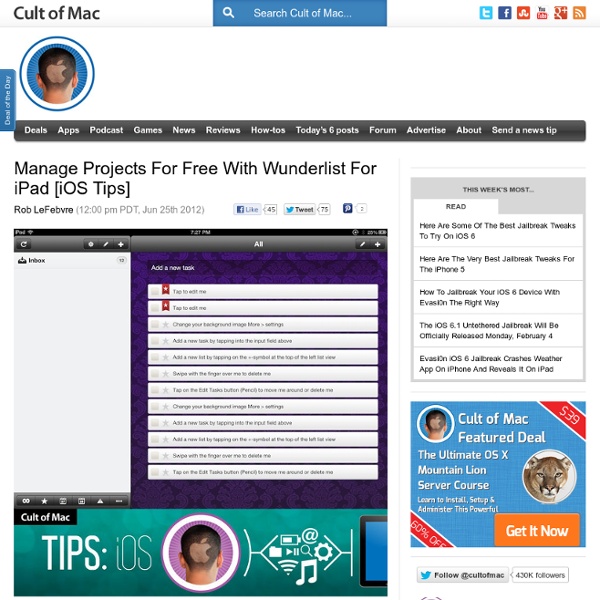Manage Projects For Free With Wunderlist For iPad [iOS Tips

Quickoffice Pro HD Is Now Capable Of Viewing And Editing Office 2010 Documents
Quickoffice Pro HD, one of the App Store’s top Microsoft Office document viewing and editing applications for iPad, will now allow you to work on those Office 2010 documents when on-the-go. Identifiable by the “x” at the end of the file extension, recent Microsoft Office documents contain Open XML formatting that’s not present in earlier Office documents. You may be thinking, Quickoffice Pro HD already supports documents with .docx, .xlsx, and .pptx extensions. Overall features of Quickoffice Pro HD include: Create, View & Edit 1997 – 2010 Word® documents (.doc & .docx)Create, View & Edit 1997 – 2010 Excel® spreadsheets (.xls & .xlsx)Create, View & Edit PowerPoint® presentations (create/edit .ppt & view 97 – 2010 .pptx)Save files as PDFs and print using iOS AirPrintOpen, edit & save files from SharePoint**File support includes 97 – 2010 DOC, DOCX, XLS, XLSX, PPT, PPTX In addition to working with files locally, Quickoffice Pro HD offers connectivity with:
Report: Cloud Computing Catching On in Emerging Markets
While cloud computing gains steadily in the U.S., U.K. and Germany (and rather slowly in Canada ), it's taking off in emerging markets like Brazil, China and India. According to a study by GfK Custom Research, and covered by FineChannel , cloud computing enjoys relatively high penetration rate in emerging markets, regardless of company size. According to GfK, decision makers in Brazil, China and India have a much more positive view of cloud computing and cite cost-effectiveness, flexibility and security as the main benefits. In contrast, decision makers in the U.S. and the U.K. see security as a barrier rather than a strength, and view flexibility as the main advantage. But Fine Channel notes that data security is seen as a benefit by many in established markets as well. In addition to security, cost, including migration and subscription rates, is often seen as a barrier to adoption. Photo by Jeffrey Bell
Why the cloud must come back to earth
Cloud services seem to have got hung up on providing applications, but the focus needs to shift back to network resources as services, says Lori MacVittie. In the early days of cloud computing all the enthusiasm was about the network, but that focus has been quickly eclipsed by the promise of easy application deployment. The end user has become the centre of attention. The call to provide business users with what were described as ways to circumvent unresponsive IT organisations grew louder, while calls for network infrastructure services were quickly drowned out. Of late, cloud computing seems to have stalled in its pursuit of the goal of IT as a service. It's time to step back and refocus on what needs to be accomplished if we're ever going to reach the top of this technological Mount Everest. Policies as services Those policies need to be delivered more like services than scripted configurations, and they need to be application-centric. Enabling services
citation template
Citation
Citation
Citation
Citation
Citation
Related:
Related:



